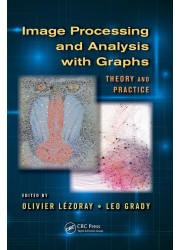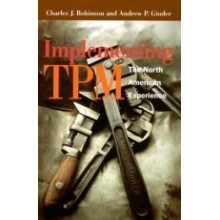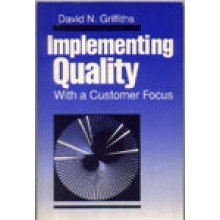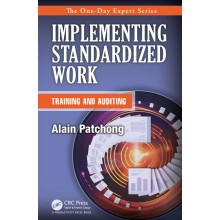Image Processing and Analysis with Graphs: Theory and Practice
ISBN: 9781138071766
Author: Olivier Lezoray, Leo Grady
Dispatch Time: 15 - 30 Days
Quantity:
Add to Compare
Summary
Covering the theoretical aspects of image processing and analysis through the use of graphs in the representation and analysis of objects, Image Processing and Analysis with Graphs: Theory and Practice also demonstrates how these concepts are indispensible for the design of cutting-edge solutions for real-world applications.
Explores new applications in computational photography, image and video processing, computer graphics, recognition, medical and biomedical imaging
With the explosive growth in image production, in everything from digital photographs to medical scans, there has been a drastic increase in the number of applications based on digital images. This book explores how graphs—which are suitable to represent any discrete data by modeling neighborhood relationships—have emerged as the perfect unified tool to represent, process, and analyze images. It also explains why graphs are ideal for defining graph-theoretical algorithms that enable the processing of functions, making it possible to draw on the rich literature of combinatorial optimization to produce highly efficient solutions.
Some key subjects covered in the book include:
- Definition of graph-theoretical algorithms that enable denoising and image enhancement
- Energy minimization and modeling of pixel-labeling problems with graph cuts and Markov Random Fields
- Image processing with graphs: targeted segmentation, partial differential equations, mathematical morphology, and wavelets
- Analysis of the similarity between objects with graph matching
- Adaptation and use of graph-theoretical algorithms for specific imaging applications in computational photography, computer vision, and medical and biomedical imaging
Use of graphs has become very influential in computer science and has led to many applications in denoising, enhancement, restoration, and object extraction. Accounting for the wide variety of problems being solved with graphs in image processing and computer vision, this book is a contributed volume of chapters written by renowned experts who address specific techniques or applications. This state-of-the-art overview provides application examples that illustrate practical application of theoretical algorithms. Useful as a support for graduate courses in image processing and computer vision, it is also perfect as a reference for practicing engineers working on development and implementation of image processing and analysis algorithms.
Table of Contents
Graph Theory Concepts and Definitions Used in Image Processing and Analysis, O. Lezoray and L. Grady
Introduction
Basic Graph Theory
Graph Representation
Paths, Trees, and Connectivity
Graph Models in Image Processing and Analysis
Graph Cuts—Combinatorial Optimization in Vision, H. Ishikawa
Introduction
Markov Random Field
Basic Graph Cuts: Binary Labels
Multi-Label Minimization
Examples
Higher-Order Models in Computer Vision, P. Kohli and C. Rother
Introduction
Higher-Order Random Fields
Patch and Region-Based Potentials
Relating Appearance Models and Region-Based Potentials
Global Potentials
Maximum a Posteriori Inference
A Parametric Maximum Flow Approach for Discrete Total Variation Regularization, A. Chambolle and J. Darbon
Introduction
Idea of the approach
Numerical Computations
Applications
Targeted Image Segmentation Using Graph Methods, L. Grady
The Regularization of Targeted Image Segmentation
Target Specification
Conclusion
A Short Tour of Mathematical Morphology on Edge and Vertex Weighted Graphs, L. Najman and F. Meyer
Introduction
Graphs and lattices
Neighborhood Operations on Graphs
Filters
Connected Operators and Filtering with the Component Tree
Watershed Cuts
MSF Cut Hierarchy and Saliency Maps
Optimization and the Power Watershed
Partial Difference Equations on Graphs for Local and Nonlocal Image Processing, A. Elmoataz, O. Lezoray, V.-T. Ta, and S. Bougleux
Introduction
Difference Operators on Weighted Graphs
Construction of Weighted Graphs
p-Laplacian Regularization on Graphs
Examples
Image Denoising with Nonlocal Spectral Graph Wavelets, D.K. Hammond, L. Jacques, and P. Vandergheynst
Introduction
Spectral Graph Wavelet Transform
Nonlocal Image Graph
Hybrid Local/Nonlocal Image Graph
Scaled Laplacian Model
Applications to Image Denoising
Conclusions
Acknowledgments
Image and Video Matting, J. Wang
Introduction
Graph Construction for Image Matting
Solving Image Matting Graphs
Data Set
Video Matting
Optimal Simultaneous Multisurface and Multiobject Image Segmentation, X. Wu, M.K. Garvin, and M. Sonka
Introduction
Motivation and Problem Description
Methods for Graph-Based Image Segmentation
Case Studies
Conclusion
Acknowledgments
Hierarchical Graph Encodings, L. Brun and W. Kropatsch
Introduction
Regular Pyramids
Irregular Pyramids Parallel construction schemes
Irregular Pyramids and Image properties
Graph-Based Dimensionality Reduction, J.A. Lee and M. Verleysen
Summary
Introduction
Classical methods
Nonlinearity through Graphs
Graph-Based Distances
Graph-Based Similarities
Graph embedding
Examples and comparisons
Graph Edit Distance—Theory, Algorithms, and Applications, M. Ferrer and H. Bunke
Introduction
Definitions and Graph Matching
Theoretical Aspects of GED
GED Computation
Applications of GED
The Role of Graphs in Matching Shapes and in Categorization, B. Kimia
Introduction
Using Shock Graphs for Shape Matching
Using Proximity Graphs for Categorization
Conclusion
Acknowledgment
3D Shape Registration Using Spectral Graph Embedding and Probabilistic Matching, A. Sharma, R. Horaud, and D. Mateus
Introduction
Graph Matrices
Spectral Graph Isomorphism
Graph Embedding and Dimensionality Reduction
Spectral Shape Matching
Experiments and Results
Discussion
Appendix: Permutation and Doubly- stochastic Matrices
Appendix: The Frobenius Norm
Appendix: Spectral Properties of the Normalized Laplacian
Modeling Images with Undirected Graphical Models, M.F. Tappen
Introduction
Background
Graphical Models for Modeling Image Patches
Pixel-Based Graphical Models
Inference in Graphical Models
Learning in Undirected Graphical Models
Tree-Walk Kernels for Computer Vision, Z. Harchaoui and F. Bach
Introduction
Tree-Walk Kernels as Graph Kernels
The Region Adjacency Graph Kernel as a Tree-Walk Kernel
The Point Cloud Kernel as a Tree-Walk Kernel
Experimental Results
Conclusion
Acknowledgments
Copyright © 2014 Engineering Standards Bureau. All Rights Reserved.
Developed By Zoom Into Web






